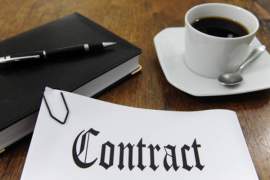
Learn How Bankruptcy and Job Loss are Intertwined

Related Forms
Schedule B - Personal Property
Schedule C - Property Claimed as Exempt
Schedule D - Creditors Holding Secured Claims
Schedule E - Creditors Holding Unsecured Priority Claims
Schedule F - Creditors Holding Unsecured Nonpriority Claims
Schedule G - Executory Contracts and Unexpired Leases
Schedule I - Current Income of Individual Debtor(s)
Schedule J- Current Expenditures of Individual Debtor(s)
Summary of Schedules (Includes Statistical Summary of Certain Liabilities)
View All
Often enough, people will make long-term plans for their future and their money based on their current state of affairs. While they may not be exactly reckless with what they have, they nonetheless lack the foresight that would apprise them of the economic downturn that looms ahead. Before long, one or more members of the family have lost their job, and the whole household is claiming bankruptcy because they cannot meet the payments on the loans and purchases they made in better times.
Indeed, bankruptcy and employment would seem to be two diametrically opposed forces. In the act of a company claiming bankruptcy, some jobs are likely to be lost in the shuffle. Bankruptcy and employment are again put at odds with one another on a personal front as well. However, in this scenario, it is the former employee claiming bankruptcy following job loss, not the other way around.
The following are some notes on how bankruptcy and employment (or lack thereof) are so intimately intertwined:
From an ownership standpoint, the worst outcome for a company in claiming bankruptcy is a total liquidation of all assets. From here, it is only a short distance to realization of the strength of the inverse relationship between bankruptcy and employment. After one loses his or her job, the level of importance of that person's take-home pay to everyone's welfare is critical to any decision moving forward.
In a two-income household, at least in the short term, the spouse/partner who is employed can use his/her earnings and benefits to support the family and prevent them from claiming bankruptcy. In cases where both parents are let go, or only one parent worked outside the home in the first place, this transition may be more difficult. Adding situations like pregnancy and widespread unemployment to the mix, the proverbial shadow of debt may be too much for some Americans to take, prompting them to file for relief.
Especially with high unemployment rates persisting in the United States, bankruptcy and employment would seem farther apart than ever before. Before claiming bankruptcy, though, debtors should think about how they may be able to help themselves out without significantly hurting their credit rating.
NEXT: Quick Tips on Using Credit Cards





















